My City Too! is a pioneering, London-wide campaign to give young people a voice in the built environment. Campaign co-chair Lee Mallett explains what it does.
Young people feel excluded from debates and decisions about the future of their towns and cities. In the Young Londoners’ Survey carried out by the Greater London Authority in 2005, only 7% of those surveyed thought they could have any influence in their neighbourhood and 61% said they had no influence at all.
Yet they are our future.
My City Too! is a pioneering campaign to let young people’s voices be heard. It is seeking ‘better places and spaces for young people in the capital’ but, of course, the principle is applicable everywhere.
It challenges decision-makers to address directly the issues raised and adopt recommendations made by young people.
After all, what is the ‘sustainability’ hoo-ha for if not their benefit?
Since March, six local action research projects and six monthly forums have involved more than 90 young Londoners from 16 boroughs.
My City Too! has a campaign assembly consisting of 32 ‘ambassadors’ who regularly explore various sites and routes across the city and examine the effectiveness of the public realm for their peer group and other members of the community.
The campaign’s activities are designed to enable the ambassadors to develop new skills and tools, broaden their experience and encourage an exchange of information about London’s built environment and issues that are important to young people.
A manifesto of issues and potential
solutions arising from the project, and special research, is being drawn together by the ambassadors group.
This will be presented publicly to local councillors and to the mayoral candidates next year at events in the run-up to the elections in May.
Unique selling point
Young people use the city in unique ways, but often feel unwelcome and unsafe. The effects of poor environments on young people, and their responses to those effects, are well documented, and yet we deny them a say in how we design the built environment.
This seems an uncaring omission when we consider the attention paid to other minority groups. Would it not be logical and appropriate to allow young people’s specific and unique needs to be better expressed and better accommodated?
Glen Cahill from Harrow, a 15-year-old ambassador for My City Too!, says: ‘A lot of adults don’t trust young people. They are suspicious of us and feel threatened by groups of us hanging out together. I want to be free of those prejudices and this project is one way to start changing people’s opinion.’
This is a big issue for the property industry and the wider built environment. The focus on sustainable communities and the proposed community infrastructure levy mean the industry is expected to make a substantial financial contribution our children’s future environment. The success or otherwise of how that investment is spent is a direct contributor to the welfare of young people and the wider community. Young people also form a large proportion of the present and future customers and occupiers of the buildings that the industry produces.
The industry also needs democratic approval for its developments, through the planning system. The British public may be notoriously anti-development, yet they flock to new schemes when they are successful.
To help this process, surely it would be better to allow young people to engage with built environment issues at an earlier stage, to give them a voice, so that when they become full citizens and members of planning committees they have a deeper understanding of the issues, and are better equipped to talk about them?
It looks to inspire young people to take an active role in their capital’s development.
It is run by young Londoners and managed by Open House, the charitable organisation that regularly attracts more than 300,000 people to visit architecturally interesting buildings on the Open House London event each September.
Open for business
Open House is arguably the most successful architectural initiative of the past decade, opening people’s eyes to the possibilities of architecture and development by giving them direct experience of it.
Through a city-wide programme of projects, My City Too! is also encouraging young people to engage in the future of the built environment, helping inspire them to bring about positive changes.
The campaign aims to present its findings from this action research to the London mayoral candidates before next year’s election, so the issues that young people think are important get on to the political and planning agendas.
New campaign sponsors are being sought to sit alongside corporate partner Tesco. Among the specific project sponsors that have so far signed up are Abbey, Arup, First Base, Make, the Department for Children, Schools and Families (through its Mediabox initiative) and Southwark Council.
Property Week’s parent company, CMPI, which also publishes Building, Building Design, Regenerate and RIBA Journal, is the campaign’s media partner and will be tracking its progress. The communications partner is FD Tamesis.
Victoria Thornton, Open House founder and My City Too! co-chair, says: ‘Working with young people through our educational programmes over the past seven years made us realise that they had little understanding of their built environment. Yet we all know what a big impact it has on their behaviour.
‘Everything was being done to them in terms of developments shaping their environment, but no one was asking what they wanted at a London-wide level.’
Thornton believes the issue is how future generations can have a positive impact on the UK’s cities. ‘How can we enable young people
to do something about that and make sure that the built environment is not just something that is “done to them”?’ she asks. ‘We want young people to demand a better environment and that is really what Open House has been about. It provides them with an understanding so they can demand a better environment and have an informed dialogue with planners, developers and professionals.’
‘And it is about helping young people to care about the wider aspects of the built environment, not just what’s “in my back yard”. It’s about having a real debate about general issues.’
MY City Too! projects
Action research
My City Too! has carried out research projects to highlight and explore issues that affect young people, to seek design solutions and ideas for action. The activities include surveys, polls, interviews, creative workshops using video and multimedia, and making built environment models.
Places to hang out
Twenty-five youngsters investigated their relationships with a range of public spaces, such as parks and shopping areas.
Shopped out
Ten youngsters made a video exploring the reality of and potential for improving retail space at Elephant and Castle and Canada Water.
Making it happen!
Ten youngsters looked at new ways of making shared spaces in residential areas with Make Architects.
Inside out
Twenty youngsters undertook a multimedia project examining ways in which anti-social behaviour in public places could be minimised.
Intergenerational forum
Fifteen youngsters and 15 planning councillors from several boroughs worked together to identify issues in the built environment and develop creative solutions.
Reaching First base in Greenwich
At a My City Too! workshop in October, 20 young people considered the best uses for the public realm element of First Base’s scheme for the former Greenwich District Hospital site. Meeting staff from First Base and Make Architects, they gained a better understanding of the development’s process and its ambitions. They measured out features such as the proposed pool and acted out activities that the new public facilities might foster. ‘My City Too! has created the perfect solution to get young people engaged and help nurture a greater understanding and appreciation of the built environment,’ said First Base managing director Elliot Lipton.
Young people have their say
My City Too! has carried out a ‘peer to peer’ survey of more than 570 young people across London, which is continuing. These are some of the views they expressed:
‘Get people working together so they are confident and find it easy to talk to each other. It might be a good idea to get the police and young people working together so we have a better understanding of each other.’
Sara, 16, Hammersmith and Fulham
‘Make colourful surfaces — there is too much dull concrete. There also needs to be a bigger amount of things like benches or bins, instead of just one standing alone.’
Nusibah, 15, Westminster
‘Instead of public toilets outside, which are never clean enough, make buildings with toilets accessible without the need to pay.’
Melissa, 13, Newham
‘Make more recycling bins available, because I have to walk quite far to recycle.’
Ingrid, 13, Newham
‘Trafalgar Square is always full of people of all ages and nationalities. It’s an example of a good public space.’
James, 17, Croydon
‘Westminster Academy looks great. It’s state of the art and raises our aspirations.’
Nazenin 15, Westminster
My City Too! findings so far
A selection of issues have been identified:
Challenges
Safety in public places, fear of bullying by other young people and fear of homeless or drunk people and drug addicts.
Making young people feel welcome
Postscript
Lee Mallett is co-chair of My City Too! with Victoria Thornton. The campaign is looking for more corporate sponsors to fund the next round of projects. If you are interested in helping, please contact Victoria at vthornton@openhouse.org.uk or on 020 7383 2131.




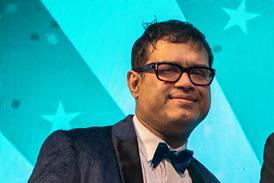





















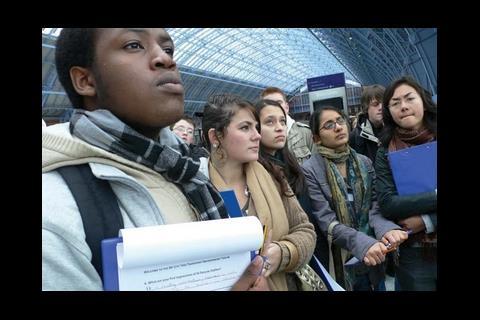
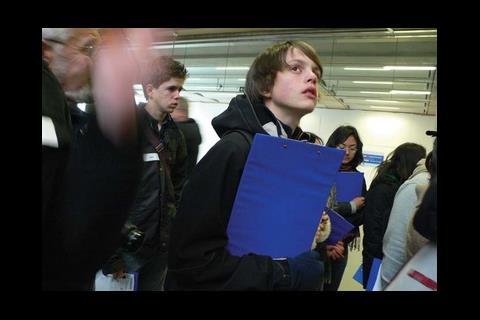
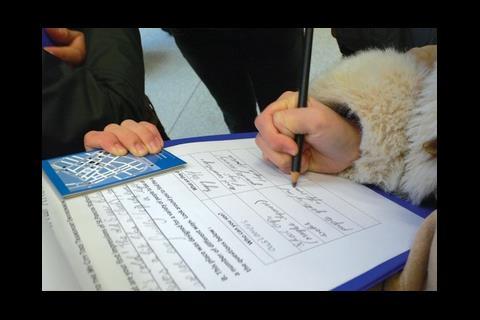
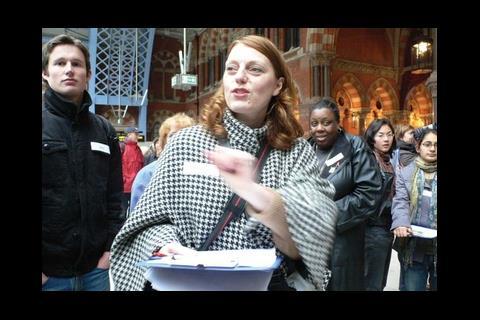

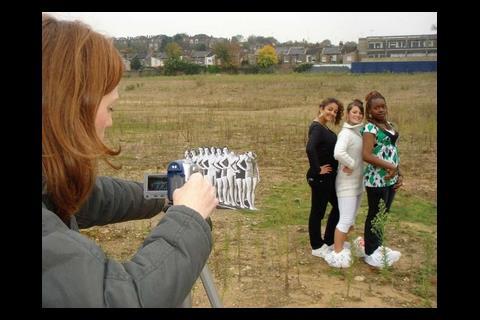
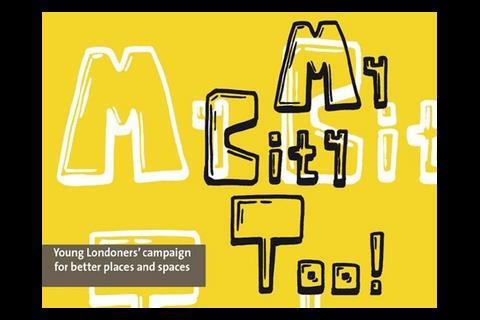
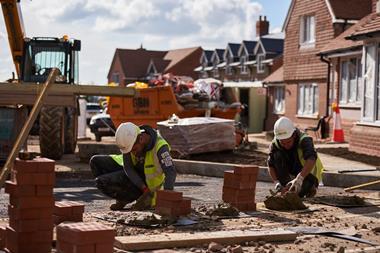





No comments yet